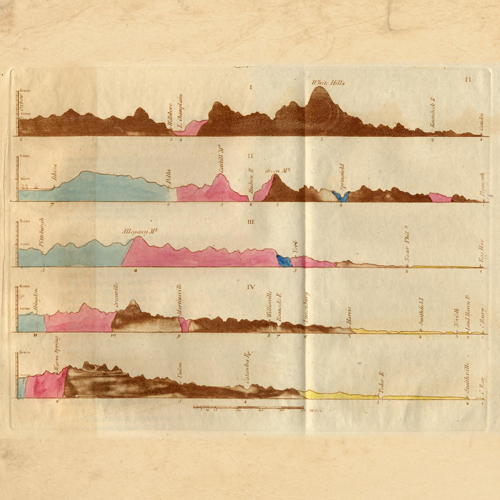‘Strata’
Exchange between Richard Pinnell and Patrick Farmer
This collaboration began with only the loosest of briefs- to discuss the album Strata by Tarab (the recording name of the Australian sound artist Eamon Sprod). Patrick Farmer and Richard Pinnell are two friends. Both listen a lot, and both write about doing so from time to time. Patrick is however also a musician, whereas Richard often finds himself in the role of a critic. There follows the first section of what has ended up becoming a long and progressive conversation that frequently and wilfully veers away from its original brief.
Part I
Richard:
So maybe an opening question, in an attempt to set context for the conversation rather than make any early qualitative judgements could be to ask if you think Strata is an unusual album at all?
Patrick:
I think in many ways it is. I’m not familiar with all of Eamon’s releases, but thinking back to the ones I do know, and I feel I know them quite well, I think this stands out – not in any qualitative way, they’re all pretty wonderful if you ask me, more so that the structure is indicative of a person who really does listen. I’m not talking about the quaint image of the recordist in his or her field, more so one who listens to that which occurs outside of their work.
I think what stands out for me the most here, is the structure. There’s a quote I use quite a bit, from Denise Levertov, ‘…form is never more than a revelation of content’. The essay I took that from is called, Some Notes on Organic Form, and I think it says a lot, in this context, in that part of what I think Eamon is doing with the placement of material is, no matter how much information we the listener may receive with the album itself, trying to take it then out of that context. In my opinion he’s taking the field out of the field, and he’s not alone in doing this, there are a lot of people working in this way right now, which is great, but this particular album, whilst it does have its filmic gestures (which I’m not complaining about) I think reaches a little beyond that. It doesn’t lay claim to any major discovery, and quite rightly, it’s slowly ticking away in more backgrounds than I can count.
I think a lot of what makes this way of working so interesting is the possibility and negation of structure…
Richard:
Yes the one thing that strikes me the clearest about this album is its sense of compositional structure. I asked my opening question to highlight observations similar to your own. From a purely conceptual perspective, it could be argued that Strata is anything but unusual. Tarab’s approach- recording extensively around a chosen site, and then sculpting the resultant recordings into a published work is not dissimilar to how many records are put together these days. I’d even go so far as suggesting that the choice of site and the “type” of sounds he came back with aren’t particularly surprising either. What makes the record stand out, and really stand out to the point of being unusual, is the way those sounds have been put to use.
I think what comes across clearly to me is how well Eamon seems to understand his material, but then doesn’t settle at that, and has indeed set out to construct something new from it all. One of the concerns I have with the recent deluge of field recording related works that reaches my ears is how so much of it seems to fetishise the “quality” of the captured sound but then go on to do nothing more with it than just present us with crystal clear reproductions, perhaps layered together in a manner that seems to be dictated by the material. We currently do seem to have a substantial generation of field recordists emerging who, perhaps as a result of the emphasis placed in recent years upon close listening, upon field recording workshops, and on the technical capabilities of rapidly advancing recording equipment, are quite happy to do so little with sounds beyond unearthing them and placing them into the most predictable of compositional frameworks.
Eamon here seems to do so much more than take a couple of nice sounding field recordings and see how they sound juxtaposed over one another. He seems to begin with a sense of structure and then applies the material to it, rather than the reverse. Certainly I wouldn’t say that this is the only way a composer can successfully work in this field, but currently, and I think increasingly, it seems to be the most likely to be successful, to my ears at least. All too often the structure of releases in this area seems to be shaped by the found material. Sometimes, such as for instance in the work of Vanessa Rossetto, or parts of your own Pictures of Men album with David Lacey this can work simply because the field recordings used are so original or striking in themselves, but then all too often we are also presented with perfectly pleasant but quickly forgotten collages of pretty textures. Harsh generalisations perhaps, but it really does begin to feel that way. It takes a strong compositional voice to stand out from what is currently an overcrowded but underdeveloped corner of the musical world, and I think to a large degree Tarab achieves that with Strata.
I went back in search of my written engagements with Tarab’s music and found this, written almost a year ago but echoing similar feelings to those I mention here. I also note in that review that Eamon’s website carries the strap line “careful arrangements of sonic rubbish”. I am sure that this is not entirely how that line is meant to be perceived, but perhaps the notion of reducing the raw material used in this kind of work to the level of “sonic rubbish”, rescued only by “careful arrangement” is a healthy approach for a composer to take right now, so taking the emphasis away from the process of capturing sounds and polishing them up and instead putting the focus onto how they are used…
Patrick:
I agree with you, in reference to Tarab’s earlier efforts (Take all the ships from the harbour, and sail them straight into hell in particular) the structure is not so unusual. Though within Strata I do feel that a lot of ornamentation has been stripped away. Many people, Olivia Block, Seth Nehil, Anne Guthrie, Michael Pisaro, John Grzinich, Vanessa Rossetto, Stephen Cornford, Haptic, are making amazing work in the ways you mentioned – and really, the ways in which they work, as you say, and only in part – recording extensively around a chosen site, and then sculpting the resultant recordings into a published work – aren’t all that important. They’re fascinating of course, but the process should not take away from the result. I think that structure always places greater onus on the material… I get at this later on, but I think a lot of the current honking about field recording can be leveled back at the listener who receives the recording as well as the one who makes it. New developments are happening in droves at the minute, and I’m happy to saddle up alongside and enjoy them. Just because an individual makes a string of albums that all bear their own idiosyncratic mark of technique and/or approach, it doesn’t mean that what they’re doing is sucking life out of the field (I’m not saying you think that, I know you don’t, this is more of a monologue now) I think what it means as much as anything is that the people who listen to this work need to change their habits as much as those who make it.
One of the interesting things for me about Strata, is the dynamic nature of the material as it moves through time. Once I put it on I’m left reeling, wishing that I could have spent longer with a sound that was so brief it barely had time to breathe. It’s like walking on a path and expecting your presence not to bother the birds above you. But fickle as we are, if the birds never flew away, we probably wouldn’t notice them half as much. I think that’s what I’m getting at, in relation to Eamon’s relationship with his material. So listening to Strata I can well imagine, not only in my mind, but perhaps in the mind of the editor (at a guess) that such a way of working can, somewhat ironically, lead one to spend more time with a single layer. Focusing on the way it interacts with its surroundings, the ones placed there digitally and those that in essence you have no control over. What, if anything, is missing once the other layers have disappeared, and where it might go from this point? The more elaborate the structure the more weight is then leveled toward the individual layers and actions. Many of these considerations may not have come about if this layer was its own whole.
Material is often synonymous with structure, indeed it becomes structure, just as structure can become material, for a time. The important thing to remember, for me, is that it is indeed material, I don’t consider my recordings to be representative, I don’t consider them to say something poignant about a location, not on their own anyway. I think that unedited, whatever, field recordings, can be wonderful, just look at Marc and Olivier Namblard’s new release, and I think that, timed correctly (again, whatever that means at the time) a field recording can be utilised wonderfully during a live performance – I’m thinking of Pisaro in particular here. But this takes me back to my previous point, about so much of the responsibility lying in the camp of the one listening to the CD – which is not something the person who made the release has much, if any, say over. When I listened to the live recording of Michael’s new piece, asleep, forest, melody, I found myself feeling incredibly euphoric, because of the simple introduction of seagulls into the live mix of field recordings and sound making devices. Of course this is on me, not Michael. I realise, and revel in, my love of that sound, but I’m not going to then put the piece on a pedestal just because it includes seagulls.
I’m already bored stiff of the gap that’s opened up within field recording. The accusations of romanticism / diffuse ecologies / lack of merit as corresponding to the amount of effort that has got into the production of the recording. I know I’m often one of the people who is quacking away with the ducks whilst listening to the planes and not knowing where the hell I am, but the arguments are so boring now. They’ve become a genre unto themselves, and as such are susceptible to the selfsame criticism they’re dishing out. I’m not saying there aren’t problems within the practise, but what really got to me today was reading this little nugget in a review – “The art of field recording has some life in it still” – though I must thank whoever wrote it, as it put a lot of things into perspective. If it ever gets to that point then there is nothing to say, regardless of what there is to be spoken about.
(To be continued)


